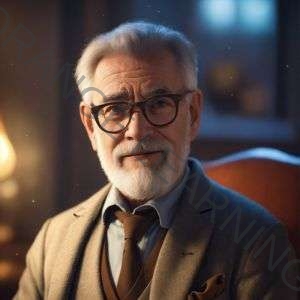Leonardo da Vinci
(1452-1519) Leonardo da Vinci was an Italian Renaissance genius known for his vast range of talents in such fields as painting, sculpture, engineering, anatomy and architecture. He was noted for his insatiable curiosity and his ability to observe and understand the world around him. His most famous works include the “Mona Lisa” and “The Last Supper,” but he also made important contributions in areas such as human anatomy and engineering, designing concepts for flying and underwater machines centuries before their practical realization. His legacy remains a source of inspiration and admiration in the world of art and science to this day.
Lessons
🔒 Login or subscribe to do the lessons.
Life of Leonardo da Vinci
Leonardo da Vinci’s life was extraordinary in many ways. His genius and his ability to combine art and science made …
Paint Analysis
The analysis of paintings allows us to delve into the world of art and fully understand the masterpieces of great …
Painting Techniques
The painting techniques used by Leonardo da Vinci exemplify his artistic genius and skill. Sfumato, chiaroscuro, perspective and color palette …
Human Proportions
Human proportions are fundamental in art, architecture, fashion and medicine. Leonardo da Vinci’s “Vitruvian Man” is an iconic example of …
Sketch
Sketching plays a fundamental role in painting and drawing. It allows artists to explore and develop their ideas before bringing …
Human Anatomy
Human anatomy is a fascinating subject that allows us to understand how we are built and how we function. Through …
Da Vinci’s Inventions
Leonardo da Vinci’s inventions are a testament to his genius and vision ahead of his time. Although many of his …
Mirror Writing
The mirror writing of da Vinci is a fascinating aspect of the life and work of this Renaissance genius. While …
Renaissance
The Renaissance was a period of great importance in the history of European art and culture. During this time, there …
Humanism
Humanism was a cultural and philosophical movement that developed during the Renaissance and placed the human being at the center …





